Leg muscle cramps can strike at the most inconvenient times, leaving you wincing in pain and desperately seeking relief. As someone who’s battled these pesky spasms for years and helped countless others find solutions, I’m here to share a comprehensive guide to tackling leg cramps head-on.
Understanding Leg Muscle Cramps
Leg muscle cramps, often called charley horses, are sudden, involuntary contractions of one or more muscles. They can occur anywhere in the leg, from the thigh to the foot, but are most common in the calf.
These cramps can last from a few seconds to several agonizing minutes and vary in intensity from mildly uncomfortable to excruciatingly painful.
The exact cause of leg cramps isn’t always clear, but several factors can contribute to their occurrence:
- Dehydration
- Electrolyte imbalances
- Overexertion during exercise
- Prolonged sitting or standing
- Certain medical conditions (e.g., peripheral artery disease, diabetes)
- Pregnancy
- Medications (e.g., diuretics, statins)
Understanding these potential triggers can help us target our treatments more effectively and prevent future episodes.
Quick Fixes for Immediate Relief
When a leg cramp strikes, you want relief fast. Here are some immediate actions you can take to ease the pain and relax the muscle:
1. Stretch It Out
Gently stretch the affected muscle. For a calf cramp, try pointing your toes up towards your shin while keeping your leg straight.
Hold this position for 30 seconds, or until you feel the muscle begin to relax.
If you’re able to stand, you can also try a wall stretch by placing your hands on a wall, stepping the affected leg back, and leaning forward to stretch the calf.
2. Massage the Area
Use your hands to knead the cramping muscle gently. Start with light pressure and gradually increase as the muscle begins to relax.
Focus on the area that feels tightest, using circular motions with your thumbs or the heel of your hand.
This can help break up the muscle knot and promote blood flow to the area.
3. Apply Heat
A warm compress or heating pad can help relax the muscle and increase blood flow to the area. Apply heat for 10-15 minutes at a time.
You can also take a warm bath or shower, allowing the warm water to soothe the affected muscle.
The heat helps to increase blood circulation and relax muscle fibers, potentially shortening the duration of the cramp.
4. Try Cold Therapy
Some people find relief by applying a cold pack to the cramping muscle. This can help numb the pain and reduce inflammation.
Wrap an ice pack or bag of frozen vegetables in a thin towel and apply it to the affected area for 10-15 minutes.
Alternate between cold and heat therapy for most benefit.
5. Walk It Off
If possible, try to stand up and walk around. This can help stretch the muscle and improve circulation.
Start with small, gentle steps and gradually increase your pace as the pain subsides.
Walking also helps to activate opposing muscle groups, which can help with relaxing the cramping muscle.
6. Hydrate
Drink a glass of water or an electrolyte-rich beverage. Dehydration is a common cause of muscle cramps, so replenishing fluids can help reduce symptoms.
If you’re prone to nighttime cramps, keep a water bottle by your bed for quick access.
Pro Tip: Keep a tennis ball or foam roller by your bed. Rolling the affected area can provide quick relief, especially for nighttime cramps. The pressure from the ball or roller can help break up muscle knots and promote blood flow to the area.
Hydration and Electrolyte Balance
One of the most common causes of leg cramps is dehydration and electrolyte imbalance. Our muscles need proper hydration and a balance of electrolytes like sodium, potassium, and magnesium to function correctly.
Here’s how to address this crucial aspect of cramp prevention:
1. Stay Hydrated
Aim to drink at least 8 glasses of water a day, more if you’re active or in hot weather. Don’t wait until you feel thirsty to drink – by then, you’re already mildly dehydrated. Carry a water bottle with you throughout the day and set reminders to drink regularly.
2. Replenish Electrolytes
After intense exercise or sweating, consider an electrolyte drink or supplement. Sports drinks can be helpful, but be mindful of their sugar content.
You can also make your own electrolyte drink by mixing water with a pinch of salt and a squeeze of lemon juice.
3. Eat Electrolyte-Rich Foods
Incorporate foods high in potassium, magnesium, and calcium into your diet. Some excellent options include:
- Potassium: Bananas, sweet potatoes, avocados, spinach
- Magnesium: Nuts, seeds, whole grains, dark chocolate
- Calcium: Dairy products, leafy greens, fortified plant-based milk
4. Try Pickle Juice
As odd as it sounds, some athletes swear by drinking a small amount of pickle juice to quickly relieve cramps. The high salt and vinegar content may help restore electrolyte balance.
While the science is still out on this remedy, many find it effective.
Try drinking 2-3 ounces of pickle juice at the onset of a cramp.
5. Monitor Your Salt Intake
While too much sodium can be problematic, not getting enough can also lead to muscle cramps, especially if you’re very active or sweat a lot. Don’t be afraid to add a pinch of salt to your meals or sports drink, particularly during hot weather or intense physical activity.
Supplements and Natural Remedies
While a balanced diet should provide most of the nutrients you need, some people find relief from leg cramps through supplementation. Here are some options to consider:
1. Magnesium
This mineral plays a crucial role in muscle function. Try taking 300-400 mg of magnesium daily.
Magnesium glycinate is often well-tolerated and easily absorbed. You can also increase your dietary intake of magnesium-rich foods like spinach, almonds, and black beans.
Recommended Product: Natural Rhythm Triple Calm Magnesium 150 mg
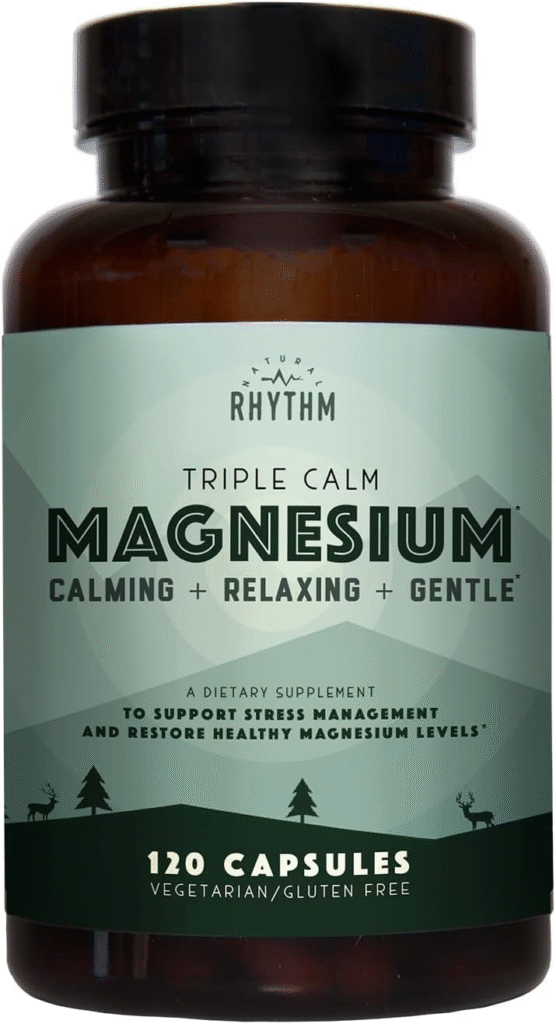
2. Vitamin B Complex
B vitamins, especially B12, can help with nerve function and may reduce cramp frequency. A B-complex supplement can confirm you’re getting a full spectrum of these important vitamins.
Foods rich in B vitamins include eggs, lean meats, and fortified cereals.
Recommended Product: Nurturly Vitamin B Complex
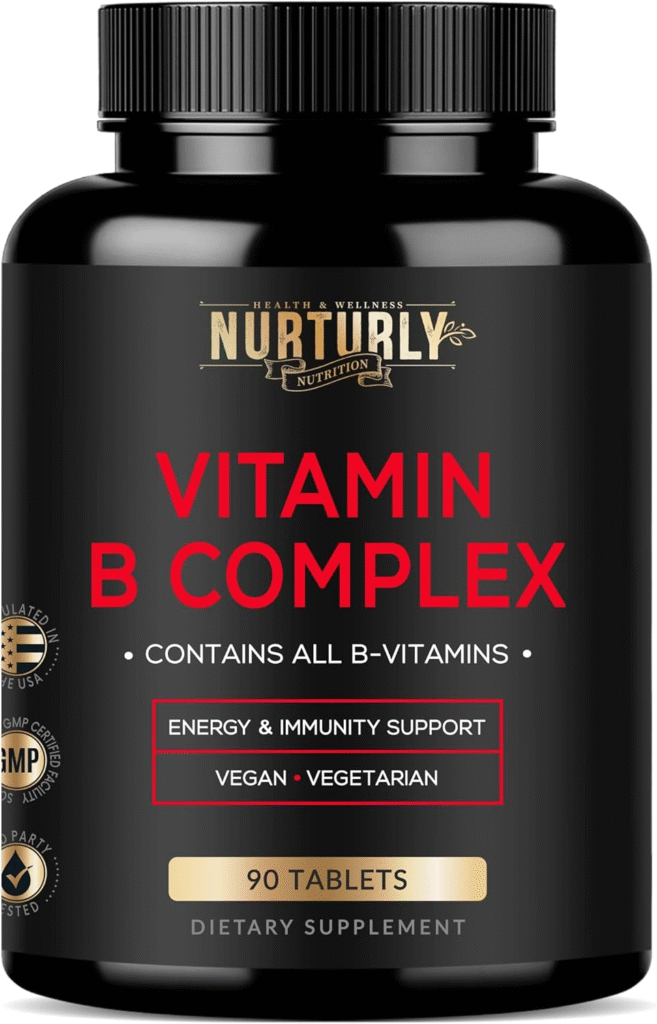
3. Calcium
Essential for muscle contraction, calcium supplements may help if you’re deficient. Aim for 1000-1200 mg per day, depending on your age and gender.
If you’re not a fan of dairy, consider calcium-fortified plant-based milk or leafy greens like kale and collard greens.
Recommended Product: Nature’s Bounty Nature’s Bounty Calcium
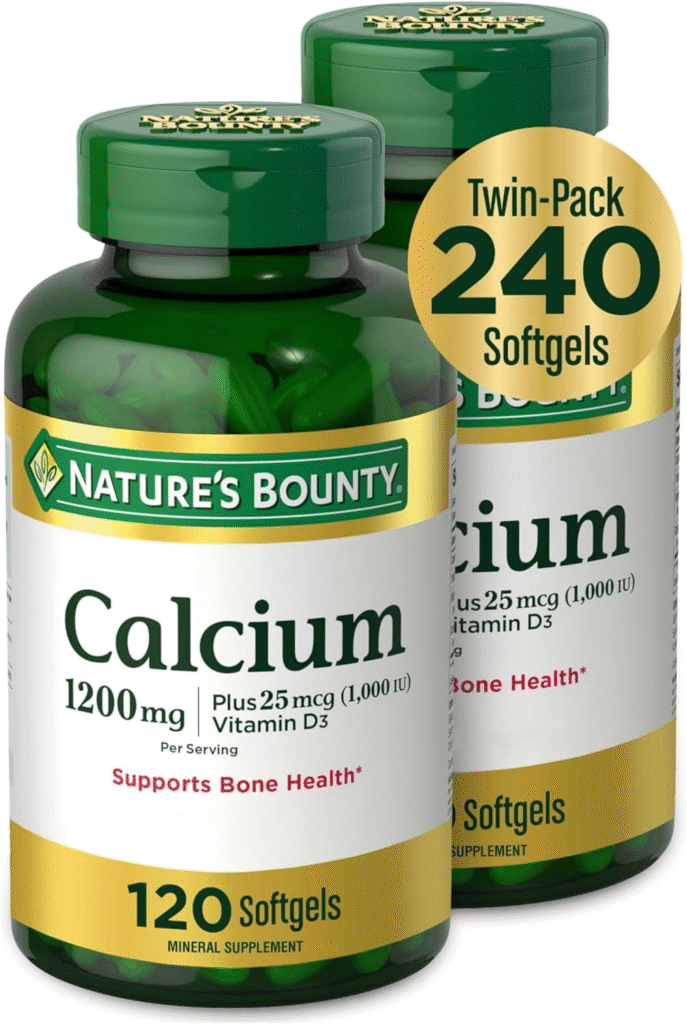
4. Cramp Bark
This herb has been traditionally used to relieve muscle cramps and spasms. It’s available as a tincture or in capsule form.
Start with a low dose and increase gradually as needed.
Recommended Product: Secrets of the Tribe Cramp Bark
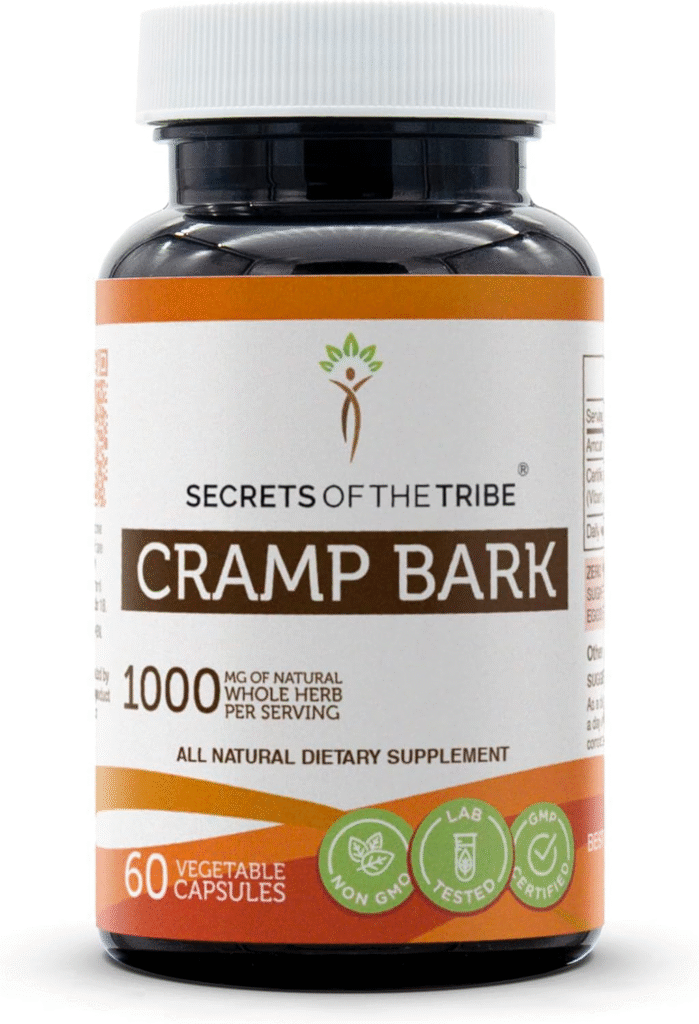
5. Essential Oils
Peppermint or lavender oil, when diluted and massaged into the affected area, may provide relief. Mix a few drops with a carrier oil like coconut or jojoba before applying to the skin. The cooling sensation of peppermint can be particularly soothing for cramping muscles.
Recommended Product: Naturopathy Essential Oil
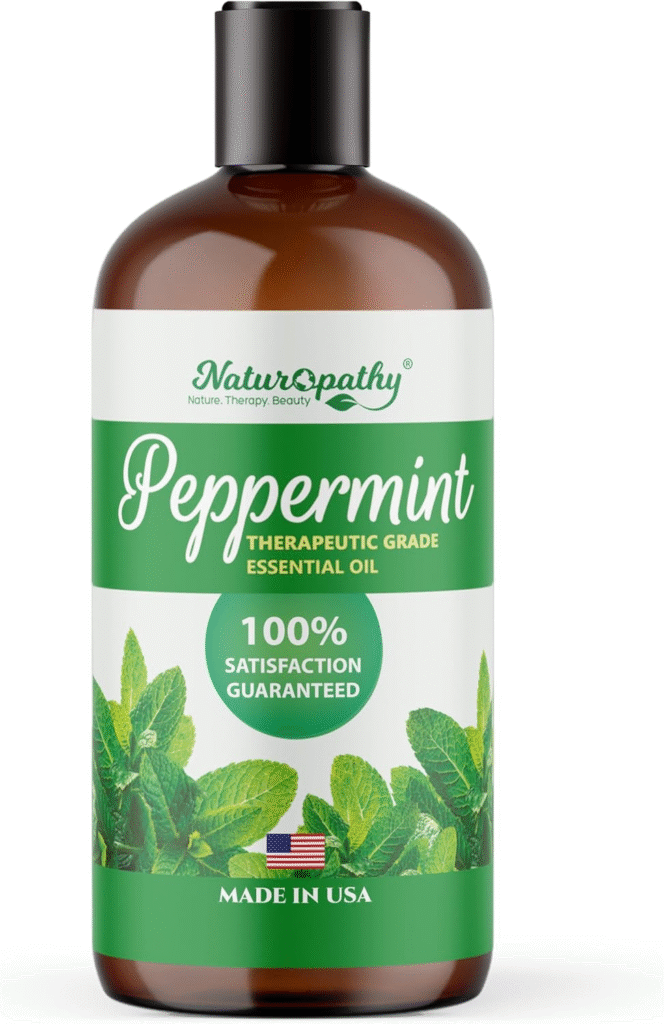
6. Tart Cherry Juice
Rich in antioxidants and anti-inflammatory compounds, tart cherry juice may help reduce muscle soreness and cramps. Try drinking 8-12 ounces daily, especially after exercise.
It’s always best to talk to a healthcare provider before starting any new supplement regimen, especially if you have underlying health conditions or are taking medications.
Recommended Product: Knudsen Just Juice, Tart Cherry

Exercise and Stretching Techniques
Regular exercise and stretching can significantly reduce the frequency and severity of leg cramps. Here’s a detailed look at what you can do:
1. Daily Stretching Routine
Focus on stretching your calf muscles, hamstrings, and quadriceps. Hold each stretch for 30 seconds, and repeat 2-3 times.
Here are some effective stretches:
- Calf stretch: Stand facing a wall, place your hands on the wall, and step one foot back. Keep your back leg straight and heel on the ground, leaning forward until you feel a stretch in your calf.
- Hamstring stretch: Sit on the floor with one leg extended. Reach for your toes, keeping your back straight.
- Quadriceps stretch: Stand on one leg, bend the other knee, and bring your heel towards your buttocks. Hold your foot with your hand.
2. Yoga for Leg Cramp Prevention
Certain yoga poses can help stretch and strengthen leg muscles. Try incorporating these into your routine:
- Downward-facing dog: Stretches calves and hamstrings
- Standing forward bend: Lengthens the entire back of the legs
- Reclined hand-to-big-toe pose: Targets hamstrings and calves individually
3. Calf Raises for Strength
This simple exercise can strengthen your calf muscles and improve circulation:
- Stand with your feet hip-width apart, near a wall or chair for balance if needed.
- Slowly rise up onto your toes, lifting your heels off the ground.
- Hold for a moment, then slowly lower back down.
- Repeat 15-20 times, 2-3 sets.
4. Low-Impact Cardio
Activities like swimming, cycling, or using an elliptical machine can help improve overall muscle function without putting too much stress on your legs. Aim for at least 30 minutes of moderate-intensity cardio, 3-5 times per week.
5. Proper Warm-Up and Cool-Down
Always include a thorough warm-up and cool-down in your exercise routine to prevent exercise-induced cramps:
- Warm-up: Start with 5-10 minutes of light cardio (e.g., brisk walking, gentle jogging) followed by dynamic stretches.
- Cool-down: End your workout with 5-10 minutes of light activity and static stretches.
6. Progressive Muscle Relaxation
This technique can help you identify and release tension in your muscles:
- Lie down in a comfortable position.
- Starting with your feet, tense the muscles for 5 seconds, then relax for 30 seconds.
- Work your way up through each muscle group in your body.
Key Insight: Consistency is crucial. Aim to incorporate stretching into your daily routine, even on days when you’re not exercising.
Set a reminder on your phone or pair stretching with a daily activity, like brushing your teeth, to make it a habit.
Lifestyle Changes for Long-Term Prevention
Sometimes, small changes in your daily habits can make a big difference in preventing leg cramps:
1. Improve Sleep Posture
Avoid pointing your toes while sleeping, as this can trigger calf cramps. Try sleeping on your side with a pillow between your knees to maintain proper alignment.
If you sleep on your back, use a pillow under your knees to keep them slightly bent.
2. Wear Proper Footwear
Shoes with good arch support can help prevent foot and leg cramps, especially if you stand for long periods. Consider getting fitted for shoes at a specialty running store, where experts can analyze your gait and foot type.
Replace your shoes regularly, especially if you’re active.
3. Stay Active Throughout the Day
If you have a sedentary job, make an effort to move regularly:
- Set a timer to stand up and stretch every hour
- Take short walks during breaks
- Use a standing desk for part of your workday
- Try desk exercises like ankle rotations and leg lifts
4. Limit Alcohol and Caffeine
Both can contribute to dehydration and electrolyte imbalances. If you do consume alcohol or caffeine, be sure to increase your water intake to compensate.
Consider setting a cut-off time for caffeine consumption, such as no caffeine after 2 PM, to improve sleep quality.
5. Manage Underlying Conditions
If you have diabetes, thyroid issues, or peripheral artery disease, work with your doctor to manage these conditions effectively. Keeping chronic conditions under control can significantly reduce your risk of leg cramps.
6. Adjust Your Diet
Consider reducing your intake of processed foods and increasing your consumption of whole foods rich in nutrients that support muscle health. This includes lean proteins, whole grains, fruits, and vegetables.
7. Practice Stress-Reduction Techniques
Stress can contribute to muscle tension and cramps. Incorporate stress-reduction techniques into your daily routine:
- Deep breathing exercises
- Meditation or mindfulness practices
- Regular exercise
- Hobbies that help you relax
8. Maintain a Healthy Weight
Excess weight can put additional stress on your leg muscles and joints, potentially increasing the risk of cramps. If needed, work with a healthcare provider or nutritionist to develop a healthy weight loss plan.
When to Seek Medical Help
While most leg cramps are harmless, albeit uncomfortable, there are times when you should ask a healthcare professional:
- Frequent or severe cramps that interfere with daily life or sleep
- Cramps accompanied by swelling, redness, or skin changes
- Muscle weakness or atrophy
- Cramps that don’t improve with self-care measures
- Cramps associated with medication use
- Persistent pain or tenderness after the cramp subsides
A doctor can help rule out underlying conditions and may prescribe medications like muscle relaxants or suggest treatments like transcutaneous electrical nerve stimulation (TENS) for severe cases. They may also recommend blood tests to check for electrolyte imbalances or other issues that could be contributing to your cramps.
Putting It All Together
Dealing with leg muscle cramps needs a multi-faceted approach. Start by addressing immediate relief through stretching and massage.
Then, focus on prevention by staying hydrated, maintaining electrolyte balance, and incorporating regular stretching and exercise into your routine.
Consider supplements if needed, but always talk to a healthcare provider first. Make lifestyle changes to support long-term prevention, and don’t hesitate to seek medical help if cramps continue or worsen.
Everyone’s body is different, and what works for one person may not work for another. Be patient and persistent in finding the right combination of treatments that work for you.
With the right approach, you can significantly reduce the frequency and severity of leg cramps, leading to more comfortable days and nights.
Frequently Asked Questions
What causes leg cramps at night?
Nighttime leg cramps can be caused by various factors, including dehydration, electrolyte imbalances, poor circulation, and certain medications. Overexertion during the day, pregnancy, and underlying medical conditions can also contribute to nocturnal cramps.
How long do leg cramps usually last?
Most leg cramps last between a few seconds to several minutes. In some cases, you may feel sore for several hours after the cramp subsides.
If cramps persist for an extended period or occur often, it’s best to ask a healthcare professional.
Can dehydration cause leg cramps?
Yes, dehydration is a common cause of leg cramps. When you’re dehydrated, your muscles don’t have enough fluid to function properly, which can lead to cramping.
Staying well-hydrated, especially during physical activity and in hot weather, can help prevent cramps.
Are bananas good for leg cramps?
Bananas are often recommended for preventing leg cramps because of their high potassium content. Potassium is an essential electrolyte that helps regulate muscle function.
While bananas can be useful, it’s important to maintain a balanced diet with various sources of electrolytes.
Can magnesium supplements help with leg cramps?
Magnesium supplements may help reduce the frequency and severity of leg cramps, especially if you have a magnesium deficiency. However, it’s important to ask with a healthcare provider before starting any new supplement regimen.
How can I prevent leg cramps during exercise?
To prevent exercise-induced leg cramps:
- Stay well-hydrated before, during, and after exercise
- Warm up properly before intense activity
- Gradually increase the intensity and duration of your workouts
- Stretch regularly, especially after exercise
- Ensure you’re getting adequate electrolytes, particularly if exercising in hot conditions
Are there any specific foods that help prevent leg cramps?
Several foods may help prevent leg cramps by providing essential nutrients and electrolytes:
- Bananas and sweet potatoes (potassium)
- Nuts and seeds (magnesium)
- Leafy greens (calcium and magnesium)
- Fish (omega-3 fatty acids and magnesium)
- Watermelon (hydration and electrolytes)
Can pregnancy cause more frequent leg cramps?
Yes, leg cramps are common during pregnancy, especially in the third trimester. This can be because of weight gain, changes in circulation, and pressure on blood vessels and nerves.
Staying hydrated, exercising regularly, and ensuring adequate calcium and magnesium intake can help manage pregnancy-related leg cramps.
Is it normal to have leg cramps after sitting for long periods?
Prolonged sitting can lead to poor circulation and muscle stiffness, which may contribute to leg cramps. If you have a sedentary job or lifestyle, try to take regular breaks to stand, stretch, and walk around.
Consider using a standing desk or doing simple exercises at your desk to improve circulation.
Can certain medications cause leg cramps?
Yes, some medications can increase the risk of leg cramps as a side effect. These may include:
- Diuretics
- Statins (cholesterol-lowering medications)
- Beta-blockers
- Certain antipsychotics
If you suspect your medication is causing leg cramps, ask your healthcare provider. Never stop or change your medication without professional medical advice.
Key Takeaways:
- Immediate relief: Stretch, massage, and apply heat or cold
- Stay hydrated and maintain electrolyte balance
- Regular exercise and stretching can prevent cramps
- Consider supplements like magnesium and vitamin B complex
- Make lifestyle changes for long-term prevention
- Seek medical help for severe or persistent cramps
Disclaimer
The information contained in this post is for general information purposes only. The information is provided by Effective Treatments for Leg Muscle Cramps: From Quick Fixes to Long-Term Solutions and while we endeavor to keep the information up to date and correct, we make no representations or warranties of any kind, express or implied, about the completeness, accuracy, reliability, suitability or availability with respect to the website or the information, products, services, or related graphics contained on the post for any purpose.

